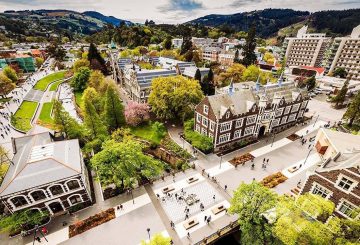16개의 폴리테크닉과 9개의 산업연수기구 (ITO) 를 감독하는 뉴질랜드의 주요 교육 기관인 Te Pūkenga는 구조 조정으로 인해 200명의 정규직 직원을 감원할 예정입니다.3년 전에 설립된 이 기관은 현재 27만 명의 학생과 9,000명의 교직원을 두고 있습니다.이 학교는 최근 재정 문제와 여러 명의 고위직 사직에 직면했습니다.
6월에는 보다 효율적인 구조를 위해 404명의 일자리를 삭감하겠다는 계획이 공유되었습니다.8,000건 이상의 구조조정 관련 신청서를 접수한 후 피터 윈더 (Peter Winder) 최고 경영자는 200명의 정규직 직원을 해임하는 최종 계획을 발표했습니다.그는 영향을 받는 대부분의 직원들이 조직 내에서 새로운 역할을 찾을 것이라고 믿고 있습니다.
400개의 역할이 제거될 예정이지만, 602개의 새로운 역할이 도입될 예정입니다.이미 공석이 된 다른 51개 직책은 삭제되며 350개의 임시 계약은 갱신되지 않습니다.
Winder는 직무가 종료되는 사람들에게 전문성을 유지하고 해고를 제한하기 위해 새 직무에 지원하도록 권장했습니다.그는 이러한 변화가 학생들이 부채를 줄이면서 효율적으로 기술과 자격을 취득할 수 있도록 돕는 것을 목표로 한다고 말했습니다.
대부분의 일자리 삭감은 타라나키, 웰링턴, 말버러를 포함한 이 지역에 영향을 미치며 164건의 직무 감축 제안이 제안되었습니다.다른 지역에서도 일자리가 줄어들 것입니다.
Te Pūkenga는 앞으로 몇 달 안에 새로운 구조로 단계적으로 전환할 계획입니다.이번 주 초 개별 회의를 통해 영향을 받은 직원들에게 알렸습니다.지난달, 이 기관은 전년도 8천만 달러의 적자를 기록했는데, 이는 이 기관의 재정적 어려움을 부각시켰습니다.




























































